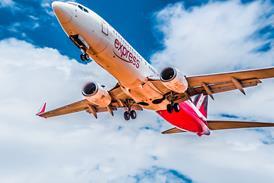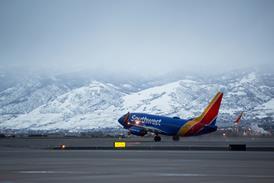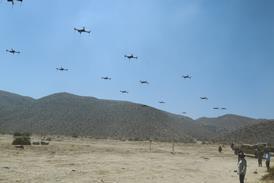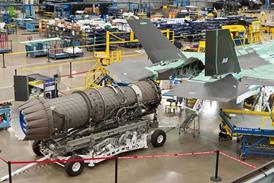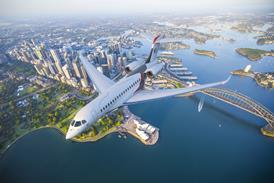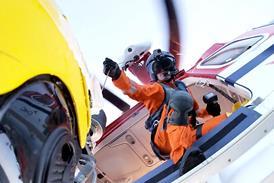McDONNELL DOUGLAS (MDC) is preparing "best and final" offers in competition with Boeing for the last phase of NASA's Advanced Composite Technology (ACT) programme.
The company's Advanced Transport Aircraft Development (ATAD) division delivered a composite stub-wing box test specimen to NASA's Langley Research Center, Virginia, in February under Phase B of the ACT. It is optimistic that breakthrough technology used to produce the wing box will give it a good chance of winning the Phase C contract, which is due to be awarded in July.
MDC's chief advance in composite-wing-making technology is its successful development of a stitched resin-film-infusion (RFI) process. ATAD says, that this not only reduces the cost and risk of making large and complex composite structures but makes them more resistant to delamination and rupture. As there are no fasteners protruding through the wing skin, RFI also results in a more aerodynamically efficient surface. Internally, the technique also reduces the chances of fuel leaks in what would be a "wet wing."
Dee Gill, Advanced Composite Wing programme director, says that it is the "out-time" of material which puts people off carrying out structures "this large and complex". He says: "Thirty to 40 days work-life in a controlled environment is all you usually get with epoxy materials. There is usually around $0.25 million tied-up with this stuff, so people are uneasy about tackling something like that."
He says that the co-cured work in the RFI process is performed in the dry state and the last thing introduced is the resin before the stucture goes into the autoclave. Gill says, "Most of the risk has gone out before it is even introduced into the autoclave for curing at 175°C and 6.9bar [100lb/in2]".
Kevlar fibres throughout the layers of carbon-epoxy material add a "third dimension" to the composite, allowing the caps to be stitched to the skins. "It also gives you an increase in shear strength," says Gill, who adds that the only fasteners used are those which join the webs to the upstanding legs of spar caps and rib webs.
Plans for Phase C, if MDC wins, will include the initial development of a 12.5m-long semi-span wing section. A full-scale wing piece would then be made and rig-tested in the static test rig made for its C-17.
Evaluation of a "flight article" could subsequently take place on an existing MD-90-size airliner, if funding is available from the US Advanced Research Projects Agency. NASA had been expected to begin structural tests of the wing box at the end of April.
Source: Flight International


